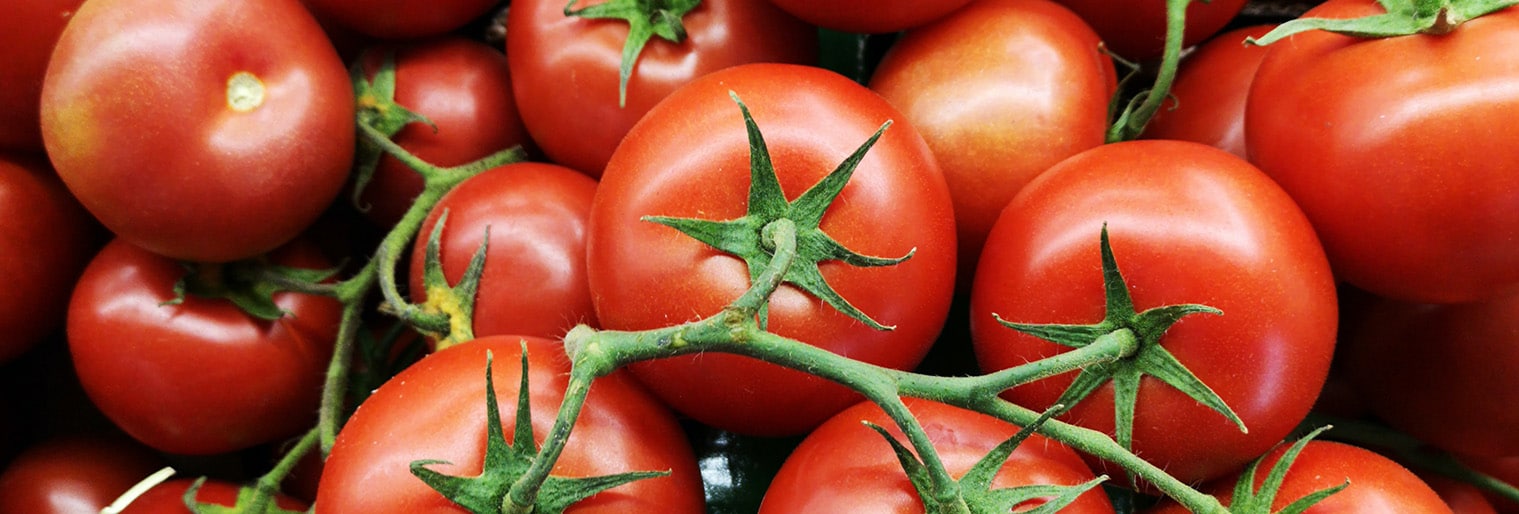
Tomato Farming
Tomatoes are an important commercial crop for horticulture farmers in Kenya. The market is strong, and the crop is relatively easy to grow. It is a favorite for greenhouse farmers. However, in order to earn maximum benefit, care must be taken on the following factors.
- Grow on deep, well-drained soils
- Use High producing and resistant varieties
- Do Proper staking
- Proper Control of pest and disease (Blights, Cankers, sucking pests, etc.)
Tomatoes require temperatures from moderate to hot, and humidity moderate to high. Rainfall should be moderate. These conditions are best achieved through irrigation or under greenhouses where possible. They do not do well in cool, or soggy conditions, or in high rainfall.
Preparing Seed Bed
Tomatoes perform better when transplanted from a seedbed nursery. They perform better when planted in trays where possible. Preparing a good nursery seedbed is important to ensure good plant establishment and vigorous early growth.
Seed beds are prepared by raising soil around 15cm high and leave spaces for walkways of around 30cm or more between beds. The soil should be tilled. This is to make it easier for the small seeds to break through. As a precaution against nursery damping off and to give them a boost, soak the seeds in a mixture of AFRIKELP (2ml/ltrs of water) and RODAZIM (1ml/ltr of water) for 4 minutes before sowing. The seeds should not be buried deep into the soil but should be covered with a very light layer of soil. You can use your finger to draw the lines in which you plant the seeds and cover just slightly with soil. Spacing between rows should be around 15cm. To increase moisture level, the bed is covered with hay or dry grass. This also reduces splash effect during watering.
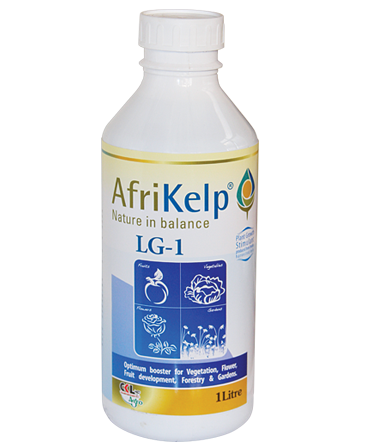

Watering is best done in the morning. The seeds are expected to sprout in 8-10 days. The watering should continue until two weeks before transplanting. Watering should then be reduced gradually stopping in the few days to allow seedlings to harden before transplanting. Seedlings will take about one month before they are ready for transplanting. Scout regularly for pests and diseases, because the earlier they are spotted and treated, the better the survival rate.
Field Planting
2 days before removing seedlings from nursery, apply AFRIKELP (2ml/ltr.) to the seedlings. This will ensure a faster recovery from transplant shock. Transplanting should be done when seedling stems are between 4-6 mms diameter, or at about 1 foot high. Avoid transplanting weak and diseased plants.
Ensure the field is free from weeds before planting by AMBAR at 35ml/20ltrs. Alternatively, you can apply AMBAR when the plants have produced the first shoots, targeting the ground between plants.
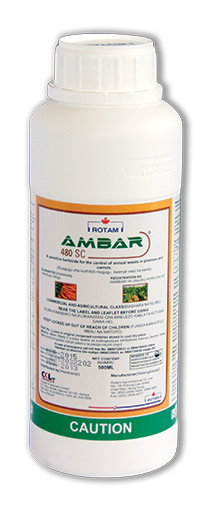
Plant the seedlings at a spacing of 45cm by 60cms. Dig the planting holes to a depth of 6 inches. If you apply manure, carefully incorporate it into the soil before planting. Apply DAP fertilizer at a rate of 80kg per acre. Treat the soil for soil borne insect pests and soil fusarium wilt by drenching with a mixture of IMAXI 15ml/20Ltr and RODAZIM 20ml/20ltre of water.
Remove the seedlings from the nursery bed after watering well. Keep them in a shaded place, away from direct sunlight. Plant one seedlings in each hole and cover the roots with soil firming the soil around the roots. Water well but not excessively.
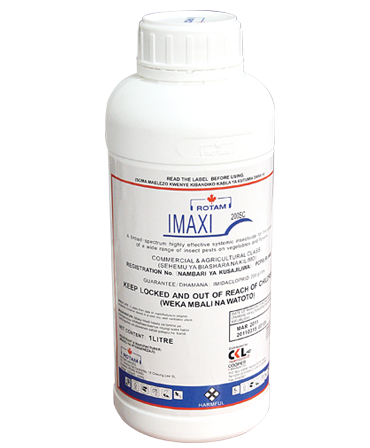
Fertiliser application, irrigation and weeding
Keep the field free from weeds particularly in the first 30 days. Avoid hand weeding as this may destroy the delicate roots. Apply AMBAR at 30ml/20ltrs between the rows and plants, to suppress any seed weeds before they sprout, and to kill any growing broad-leafed weeds. Use the appropriate nozzle (Flat) for best results. AMBAR works best when weeds are not higher than 4 inches and smaller than the tomato plants.
For strong foliar growth, apply HARMONY at 25-40ml/20lt from the first week after transplanting and every two weeks for up to 4-6 applications. This will guarantee maximum foliage development which will ensure your get the best production possible. HARMONY will also enhance your soil fertility and works well to rehabilitate poor soils.
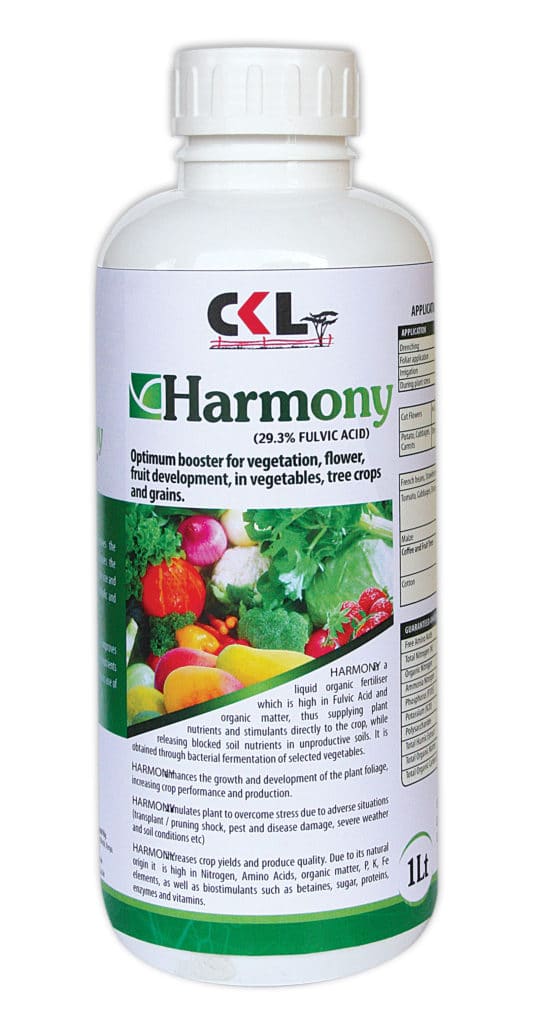
During flower set, apply another dose of AFRIKELP 20ml/20ltrs targeting the flower buds. You can also mix with HARMONY and a calcium/potassium rich soluble fertilizer, (if indicated by a soil analysis). This will avoid calcium end rot and other related fruit diseases later on, as well as protect against flower / fruit abortion. However, use of HARMONY usually reduces the need for other fertilisers at this stage, since HARMONY will unblock available Calcium and Phosphorus in the soil to be used by the plants. After flower set, avoid application of any solid fertilizers eg Urea.
Apply irrigation to keep the soil moist, without being soggy or muddy. An irrigation cycle of twice a week using 10,000 to 20,000ltrs per acre is usually sufficient for tomatoes.
Weeding should be done regularly as weeds compete for nutrients with the plants. Use AMBAR (25-40ml/20ltrs), using a straight line nozzle, rather than hand weeding, to avoid damaging the roots. Damaged roots can facilitate serious Fungal and bacterial infections.
Pest and Disease control
Scout for signs of Blight, Mildew and Bacterial Canker/Wilt. Be careful especially during cool/wet conditions when blight is most active. For best protection, drench with RODAZIM 20ml/20ltrs during planting, and apply an early spray of STAGE 10-20ml/20ltres as a precaution against fungal infections. Repeat after 7 days if conditions are cold and wet. Scout for any signs of disease after this, and apply STAGE in weekly intervals if noticed. Mix every application with HARMONY 25ml/20ltrs to aid plant vigour, and recovery from stress. Mixing with HARMONY also improves the effectiveness of the fungicide.
Check for signs of insect damage every day particularly in warm dry conditions. The most serious pests include spider mite, leaf minor (tuta absoluta), thrips, whitefly, caterpillars (Fruit worm) and aphids. All of these can cause serious damage and should be controlled as much as possible. Also check vegetation around edges of the field. To control flying pests such as whiteflies, apply “ring spraying”. This is done by first spraying in a ring around the whole shamba, then spray the inside. This will prevent the pests from flying off and hiding in unsprayed crop, to return when spraying is over.
Spray JACKPOT 12.5 ml/20Ltr to control aphids, and worms, particularly at fruit set, before the moths can lay their eggs on the fruits. Spray a mix of ROMECTIN 20ml/20ltre, and IMAXI 12.5ml/ltr to control stubborn leaf minors and red spider mites. Spray BAMAKO 5gms/20ltrs on the crop in the evening and around the edges of the field to control whitefly.
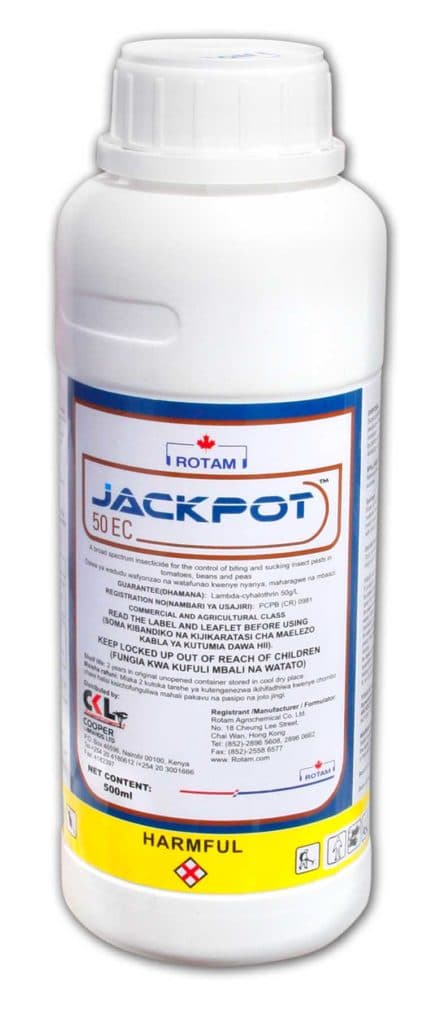

PEST AND DISEASE TABLE
| Disease | Image | Symptom | Control |
| Light Blight | 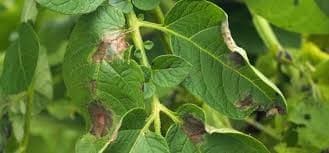  | Necrotic spots on leaves, stems, leading to total scorch of foliage. Occurs during cool, wet periods. | Plant tolerant varieties. Drench with RODAZIM during transplanting. Foliar application of STAGE from 1st week and interval of 2,3 weeks depending on weather. |
| Early Blight |  | Circular Spots with necrotic halos, leading to leaf drop. Generally poor condition of plant, | Plant tolerant varieties. Drench with RODAZIM during transplanting. Foliar application of STAGE from 1st week and interval of 2,3 weeks depending on weather. |
| Fusarium Wilt | 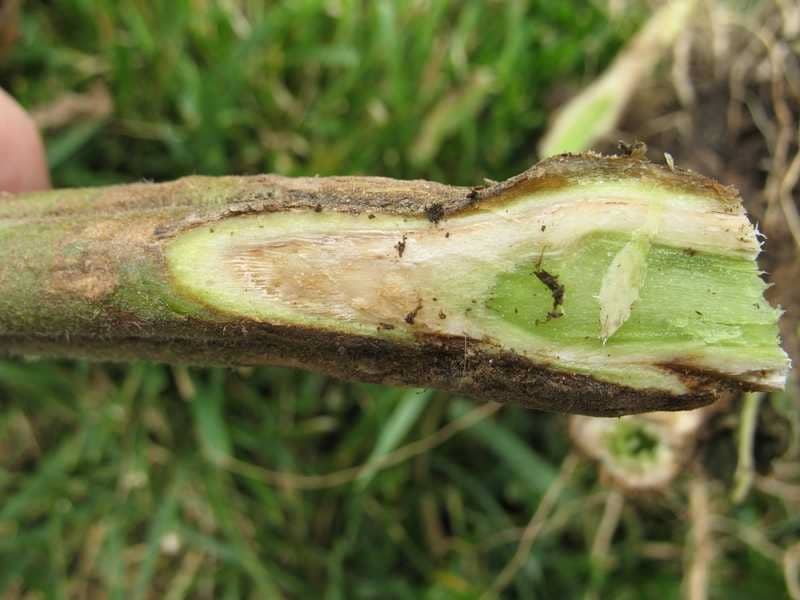 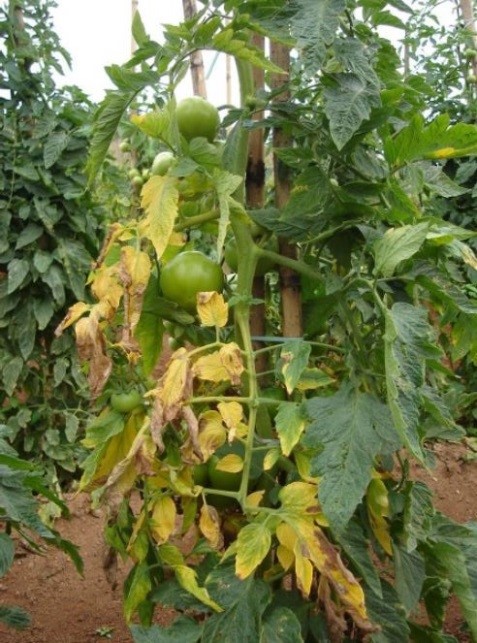 | Browning and rotting of xylems (just under the outer tissue). Yellowing of leaves on one side, leading to total wilting. | Practice crop rotation. Drench with RODAZIM during planting. Foliar spray RODAZIM, STAGE upon any sign of attack. Apply AFRIKELP to bolster tolerance and reduce stress. |
| Bacterial Wilt | 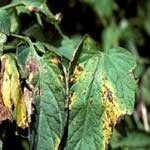 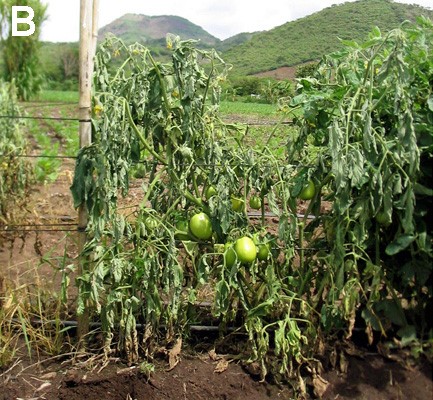 | Spots on leaves accompanied by yellowing, starting from edge of leaf towards the centre. Presence of mucus-like emission from cut stem. Generalized wilting while green. | Practice crop rotation. Remove diseased plants and destroy. Drench with RODAZIM before planting. Control nematodes and soil insects. |
| Mildew | 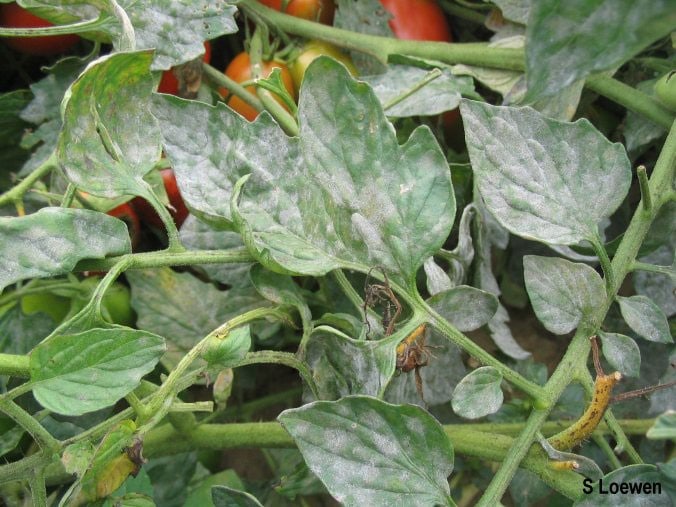 | Whitish powdery deposits on leaves. Stunted growth. Common during warm dry periods. | Irrigate using sprinklers where possible. Apply a metalaxyl based fungicide at a weekly interval. |
| Insect | Image | Symptom | Control |
| Spider Mite | 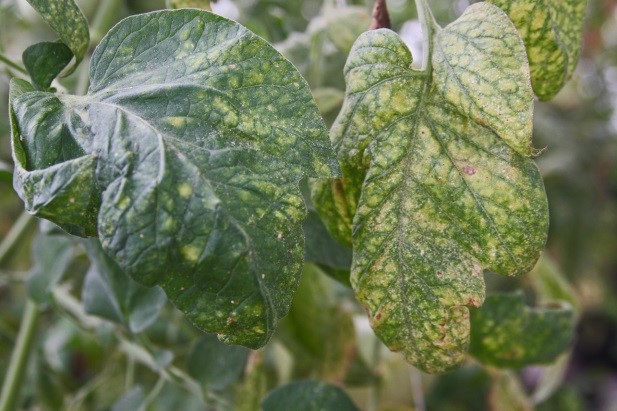 | Spotty discoloration of leaves, webbing on underside of leaves. Stunted deformed leaves. Common during warm periods. | Apply ROMECTIN at first sign of attack. |
Staking and pruning
Tomatoes should be staked and pruned to keep them neat and manageable. Staking helps to keep the fruits off the ground thus prevent rotting and disease. Pruning will control vegetative growth so the plant will produce more and larger fruits.
| Tuta Absoluta | 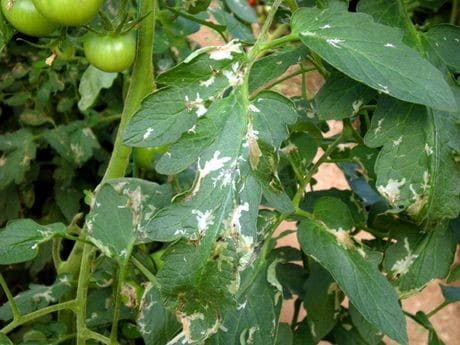 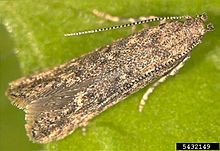 | Irregularly shaped spots on leaves. Holes on fruits, under grown and rotted fruits. Look for signs of the adult, small 0.5cm elongated low flying, brown moths | Apply ROMECTIN / IMAXI mixed at the first sign of attack, repeat after 3 days. |
| White Fly | 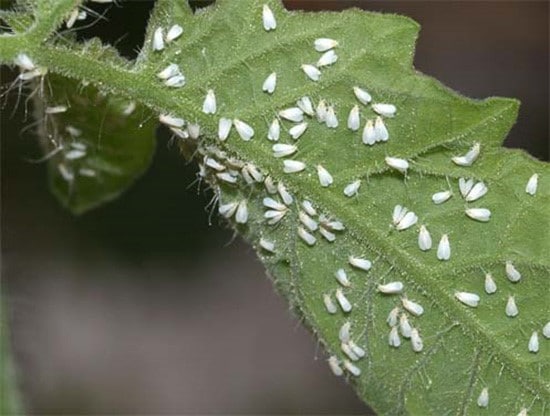 | Found in large numbers on underside of leaves. Causes poor plant condition due to intense sucking. Flies produce whitish honeydew (sukari), which turns mouldy and black. | Apply IMAXI followed by JACKPOT on 3 day intervals. Remove vegetation around edge of shamba. Apply ring spraying. |
| Tomato Fruit-worm (Bollworm) | 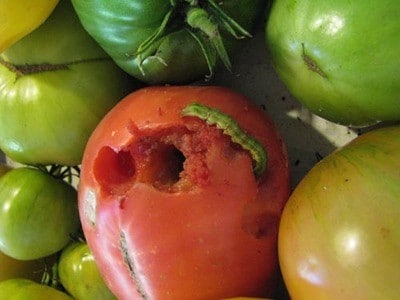 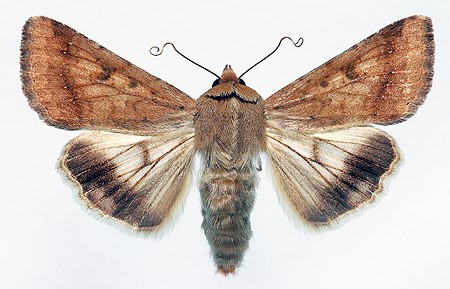 | Holes in fruits, worm present in fruit, leading to fruit rotting. Check for adults; 2cm long moths, brown with pale second wings having dark edges with a white patch on the ends. | Spray JACKPOT on first sign of attack. Apply 3 Spray just before fruit set at 5 day intervals. |
A simple method is to tie the stem to a post or string at intervals of one foot, to keep the growth upright.
Support should be done early (within one month) after transplanting when the plant is still young to avoid stem damage/breaking later on.
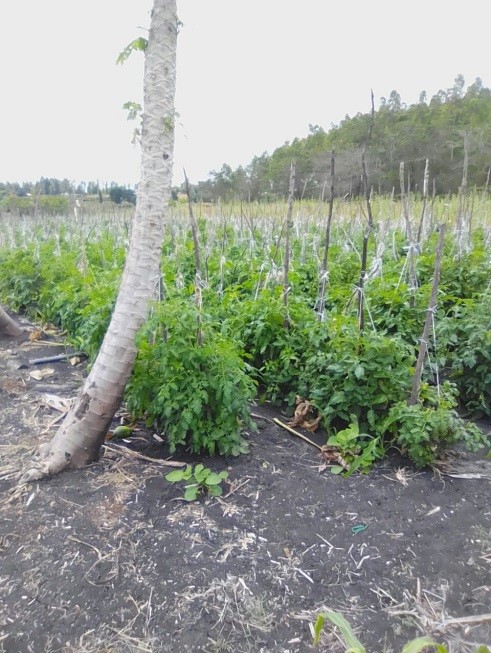
Pruning is removing side shoots, old leaves, diseased leaves and laterals. This should be done weekly to remove side shoots before they develop. Pruning is also done to remove main shoots leaving the strongest. You can decide to leave one or two shoots per plant, depending on the type of staking you plan to do.
Apply AFRIKELP 40ml/20ltr after each pruning or staking operation, to aid the plant recover from shock.
Harvesting
The tomatoes should be ready for harvesting as from the 70th day onwards depending on the variety planted. Remove the ripe fruits from the stems carefully and place in clean disinfected containers ready for transport.
Tupo site at the Agitech Grand Expo 2025. We are showcasing our high-quality Mazao F1 tomato and Kichwa F1 cabbage seeds – perfect for boosting your yields and ensuring healthier crops. 🥬🍅
Pass by our stand to learn more, get expert advice, and enjoy special offers just for you https://x.com/CKLAfricaltd/status/1974045430347386939/photo/1
Honored to welcome CS Mutahi Kagwe together with our CEO @MucaiKunyiha at the 17th African Dairy Conference & Exhibition! @DairyESADA. Visit us at our stand, KICC Nairobi 🗓 30th Sept – 2nd Oct 2025
Pass by, learn more, ask questions, and let’s grow dairy farming together. 💚 https://x.com/CKLAfricaltd/status/1973354940702793951/photo/1
